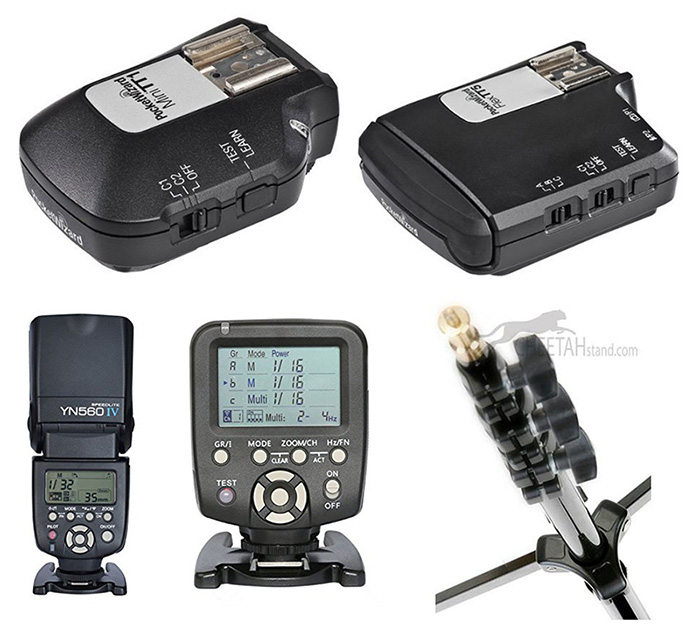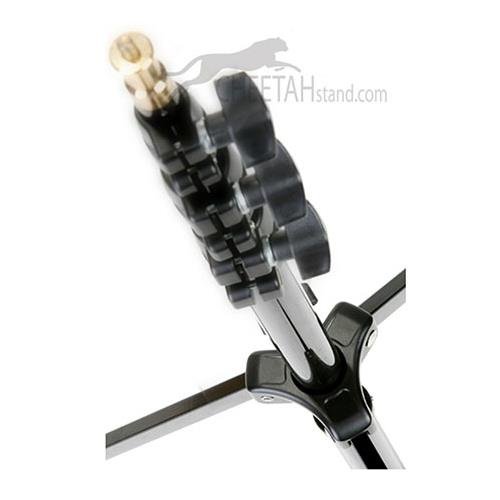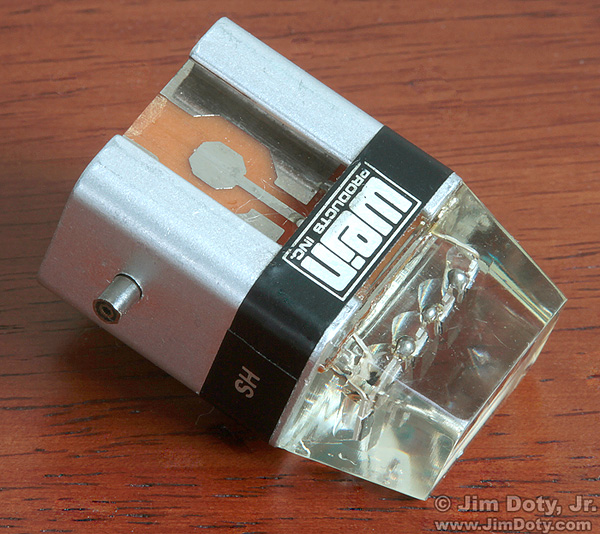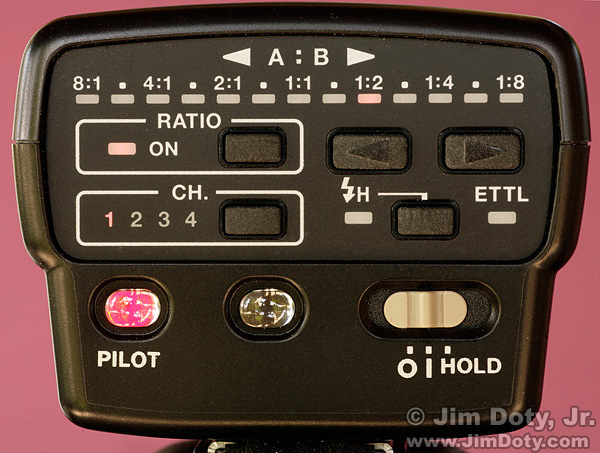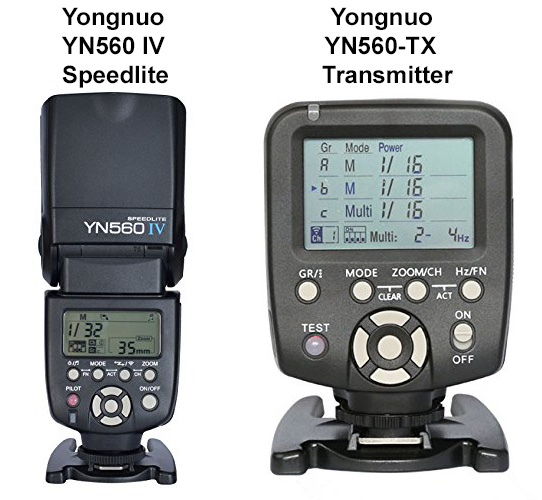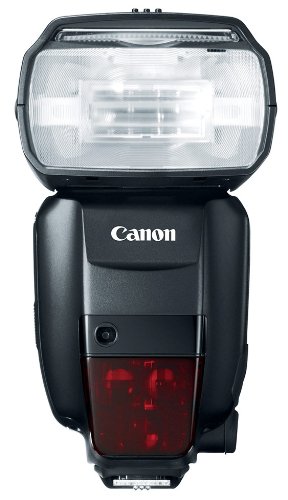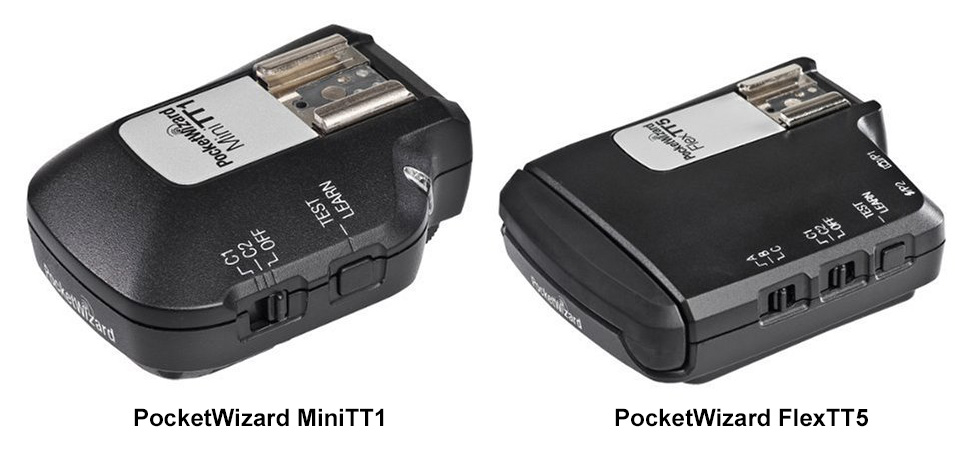There are lots of advantages to getting your flash off the camera, and it is probably much less expensive than you think. If you already have a shoe mount speedlite and if your camera has a built in pop up flash a simple $35 optical slave (see below) is all you need to get your flash off the camera.
Posted Nov. 22, 2016. Updated Nov. 21, 2017.
At a bare minimum you will need a speedlite (a flash with a hot shoe mount that can be used on or off the camera), and a way to trigger the flash when it is off the camera. That’s it. However some additional items will make your life easier.
You can always put an off-camera flash on a shelf or table or some other flat surface, or have someone hold it for you, but it is more convenient if you have a tripod or light stand so you have more flexibility as to where you put the flash. To mount your flash on the tripod/light stand you will need an umbrella adapter Last of all, it is helpful to have something that will soften the light output from your flash. So here is your list, depending on what you may or may not already have, and what you want to acquire now and what you want to get later:
1. Flash
2. A way to trigger your flash
3. Umbrella adapter
4. Tripod or light stand
5. Light modifier
We will look at these items in order of simplicity.
Umbrella Adapter
Lets deal with the simplest item first, the umbrella adapter ($20). If you already have a tripod or light stand, the umbrella adapter is what holds your flash on the tripod/light stand. Everything you need to know about how to use an umbrella adapter is in this article. If you decide to get an umbrella or a Halo softbox to soften the light, the umbrella adapter will hold them too.
Tripod or Light Stand
Odds are good that most photographers that want to try off-camera flash already have a tripod or light stand. If you don’t have a tripod, read this article. Pick a tripod that is sturdy enough for your camera body and heaviest lens. I have a light weight tripod that I only use indoors to hold a speedlite, umbrella adapter, and umbrella, but I would never trust it with my camera and lenses, or outdoors on a windy day. I have a better tripod for that. So choose wisely according to your particular needs.
If you prefer putting your off-camera flash on a light stand and don’t already have one, I highly recommend the CheetahStand. The C10 model CheetahStand is currently $105 at Amazon. Bob Davis used a set of three CheetahStands at a workshop I attended and he highly recommends them. He should know what works best. He is a high dollar wedding, event, and commercial photographer and he can afford any kind of stand he wants. When you pick up a CheetahStand, the three legs automatically retract, making the stand very easy to move around without the legs bumping into things. When you set the CheetahStand down the legs automatically spread out. I was impressed. Why isn’t every light stand designed like this?
Light Modifiers
You can use a flash off the camera without any light modifiers and great get looking photos, but there are times that a light modifier will give you softer light that is much better suited to some subjects. So light modifiers should be part of your photographic tool kit. And they aren’t expensive. A 43 inch umbrella which fits into the umbrella adapter above is only $22. I cover my favorite light modifiers in this article.
Speedlites and Off-Camera Communication
This is the complicated part of off-camera flash. The camera has to have some way to talk to the off-camera speedlite. There are several options and the option you choose may depend on whether or not you have a speedlite now, and if you do, what features your flash has.
Optical Slave
If your camera has a built in flash and you have a speedlite, or if you have two speedlites, the least expensive way is to get a Wein Micro Slave ($23). An optical slave will work with virtually any speedlite. The Micro Slave goes on top of the umbrella adapter and the speedlite slides into the top of the Micro Slave. When the Wein Micro Slave sees the flash from your camera, it fires the off-camera flash. Communication is one way. The Wein Micro Slave does not talk back to the camera, so your off-camera flash must be used in manual mode. Manual flash exposure can be simple (provided your subject doesn’t run away). If the exposure is too light, turn down the manual power on your flash (or move the flash farther from your subject). If the exposure is too dark turn up the manual power on your flash (or move the flash closer to your subject).
Infrared Speedlite Systems
A big step up from the Wein optical slave is to use an infrared system. With infrared you get automatic flash exposure. You will need two speedlites that have built in infrared systems, or you will need one speedlite with a built in infrared system and one infrared remote transmitter. If you have two infrared flash units that can talk to each other, set the flash ratio so the on-camera flash provides less light and the off-camera flash provides more light. The flash manuals will show you how to set the flash ratio, and also how to set up the two flash units so the on-camera flash controls the off-camera flash. The flash exposure is automatic. Infrared systems require direct line-of-sight communication. The off-camera flash has to see the infrared transmitter or on-camera flash with built in infrared signal.
Canon and Nikon both make infrared transmitters and infrared speedlites. Canon’s infrared transmitter is the Canon ST-E2 ($225). Nikon’s is the Nikon SU-800 Speedlite ($249). They will both control one or more off-camera flash units with automatic exposure, and if you are using more than one flash, you can set the power ratio between the flashes. This is a great way to do off-camera automatic flash.
Canon infrared speedlites are the 580 EX II Speedlite (400), the 430EX II Speedlite ($280), and the discontinued 550EX Speedlite (starting used at $105).
Nikon infrared speedlites are the SB-910 Speedlite (starting used at $350), SB-700 Speedlite ($327) and SB-400 Speedlite (starting at $144).
If these prices give you pause, the aftermarket radio controlled systems by Yongnuo are a lot less.
Radio Controlled Speedlite Systems
Radio controlled systems used to be quite expensive and not all that reliable, but all of that has changed. If you are happy with working with an off-camera flash in manual exposure mode, you can get a radio controlled speedlite and transmitter for a total of $111. That is not a typo. You get both the transmitter and the flash for well under the cost of a single infrared speedlite made by Canon or Nikon.
Most of what you need to know about infrared vs radio is in this article, along with thoughts about Canon vs Yongnuo radio controlled systems. There is a “kicker” to the lower priced Yongnuo system which is also covered toward the end of the same article. If a warranty is important to you, reading the kicker section is a must before you buy any Yongnuo speedlite or transmitter.
Suffice it to say that radio controlled systems do not have the major limitations of infrared systems. Radio systems have a much longer working range, do not require line-of-sight communications, and work in the day time. Infrared is mostly limited to use after the sun goes down.
Yongnuo Radio Controlled Systems
Some of the copycat systems are way less expensive. Canon’s infrared speedlite is $469 while the Yongnuo clone of the same flash is $120. So let’s look at options.
If you are happy working with manual flash and looking for a real bargain, a Yongnuo system is a great option. The Yongnuo YN560 IV Speedlite has a built in radio and transmitter. It will work on Canon, Nikon, Pentax, Olympus, Fujifilm, and Panasonic digital cameras. The matching Yongnuo YN560-TX Transmitter goes on the camera. The set is available in kits with two flashes and one wireless controleer for $179, or three flashes and one wireless controller for $265.
With the on-camera speedlite or transmitter you can control the power setting of one or more off-camera speedlites. You can assign each speedlite to one of 6 groups (letters A through G) and control the power output of the flashes in each group. You don’t have to run around to each individual speedlite to change the power setting. You do it all from the wireless transmitter.
If you use Canon gear and want a radio controlleds system with ETTL (Canon’s TTL automatic flash metering), you are in luck. Yongnuo has a system for you. A Yongnuo YN600EX-RT radio controlled flash is $115. The Yongnuo YN-E3-RT radio transmitter is $77. At these prices, this is the best deal you will find for a radio controlled flash system. You can buy three Yongnuo flashes plus a radio transmitter for less than the cost of one Canon radio controlled flash. The Yonguo equipment, operation, and menu system is a copy of the Canon system and they are totally interchangeable. You can mix Canon and Yongnuo gear together. A Yongnuo flash will respond to a Canon transmitter and vice versa.
Everything you need to know about the Yongnuo system is in this article. Once again, read the “kicker” section toward the end of the article. Once the seller’s return period has expired, practically speaking you have no warranty. For reasons I discuss in the article, the risk is worth it for many photographers (myself included). You should test any Yongnuo gear as soon as it arrives and if there is an issue, send it back immediately. Amazon has a longer return period than many other retailers which is why I recommend you buy your Yongnuo gear from Amazon. Links below.
Canon Radio Controlled System
Before Canon’s new system, if you wanted a radio controlled flash system, you had to buy an aftermarket transmitter and one aftermarket receiver for each of your off-camera speedlites. It was expensive (not to mention the cost of getting compatible speedlites). And, as many professional photographers can tell you, the aftermarket systems were not totally reliable.
Canon changed all that when they introduced the Canon 600EX II-RT ($479) with the radio transceiver built into the flash. What a great idea. They also introduce the Canon ST-E3-RT Radio Transmitter (285). Put a speedlite or transmitter on you camera and set it to transmit mode (Canon calls it “master”), and set one of more off-camera speedlites to receive mode (Canon calls it “slave”) and you are ready to go. You assign each speedlite to one of 5 groups (letters A through E). You control the ETTL flash exposure compensation of each “group” from the transmitter on the camera. You can also have some groups assigned to manual and other groups assigned to ETTL. It is a great system. If you shoot Canon and money is no object, go with the Canon radio controlled flash system. IF the cost is too steep, go back and look at the Yongnuo system.
PocketWizard Radio Controlled System
One of the best known and most popular aftermarket systems with TTL automatic exposure is made by PocketWizard. They make a variety of transmitters to go on your camera and transceivers to go on your speedlites. You can learn more at the PocketWizard web site. PocketWizard makes the MiniTT1 Transmitter for both Canon ($143) and Nikon ($144). You must have a PocketWizard FlexTT6 Transceiver for each off-camera speedlite. The FlexTT6s (or TT5s) also come in Canon ($158) and Nikon ($158) flavors.
There is another option instead of off-camera speedlites. If working in a studio is what you want to do, you may want to get regular studio lights, read this article.
You can find all of these items at Amazon.com by using the purchase links below. All prices are as of the date this article was updated. To learn how to use off-camera flash, go to the article links.
Purchase Links
You can order the above equipment in various sections of my photography store which has direct links to Amazon.com.
For an umbrella adapter, Cheetah light stand, Wein optical slave, light modifiers, Canon and Nikon infrared speedlites and infrared transmitters, and PocketWizard transmitters and receivers, go to Light modifiers, Flashes, and Accessories for on and off camera flash.
For Canon radio controlled transmitter and flashes, go to Canon Flash Units.
For Canon compatible radio controlled transmitter and speedlites from Yongnuo, go to Flash Units for Canon.
For Nikon compatible radio controlled transmitter and speedlites from Yongnuo, go to Flash Units for Nikon.
Article Links: Off-Camera Flash Series
Some of the Best Off-Camera Flash Equipment
Radio Controlled Speedlites: Yongnuo YN600EX-RT vs Canon 600EX-RT
Light Modifiers (Softeners) for Speedlites
Putting Together a “Studio in a Backpack”
How To Set Up a Halo Softbox or Umbrella with an Off Camera Speedlite
Photo Shoot: Using a Halo Softbox with a Yongnuo Radio Controlled Flash System
Environmental Portraits and Off-Camera Flash, Part 1
Environmental Portraits and Off-Camera Flash, Part 2
Environmental Portraits and Off-Camera Flash, Part 3
AlienBees: High Quality, Economical Studio Lights
Information Links
To learn more about flash, TTL (through-the-lens) flash metering, manual flash, off-camera flash, studio flash, portrait photography and a whole lot more, read Digital Photography Exposure for Dummies. If is one of the highest rated photography books at Amazon.com. Learn more here and purchase it here.
Ric Latham Photography: Yongnuo YN600EX-RT vs Canon 600EX-RT
Series Link
This is one in a series of articles that will guide you to the best of all things photographic. The rest of the series is here: Buyer’s Guide: Recommendations For The Best Photography Equipment, Software, Books, Magazines, DVDs, Online Photo Labs and More.

